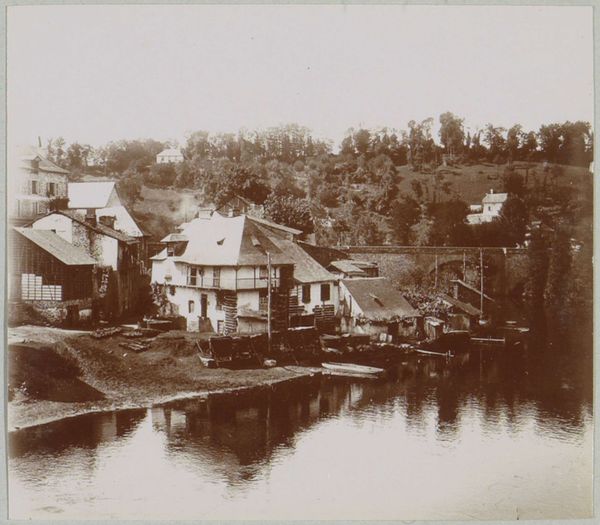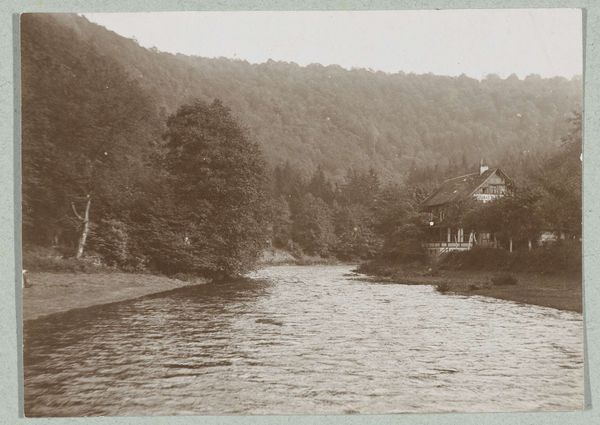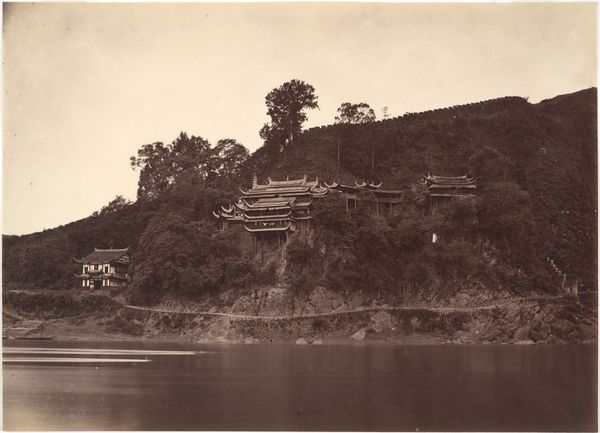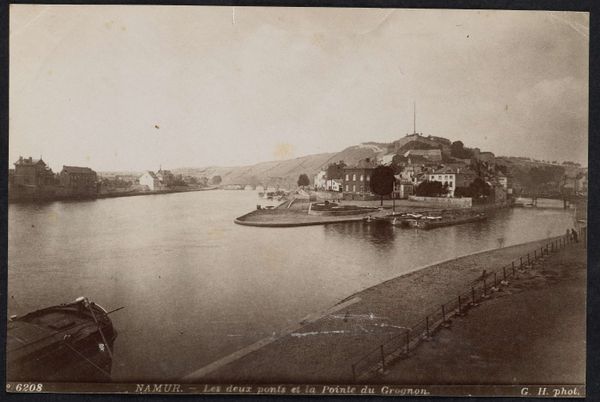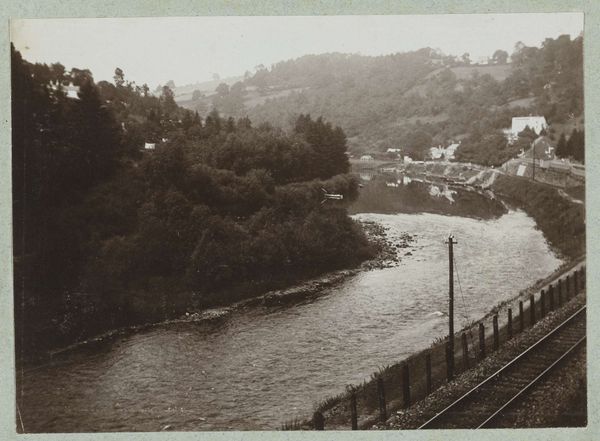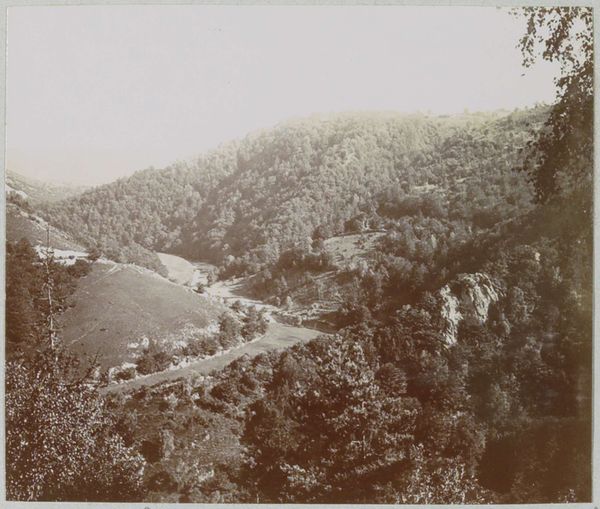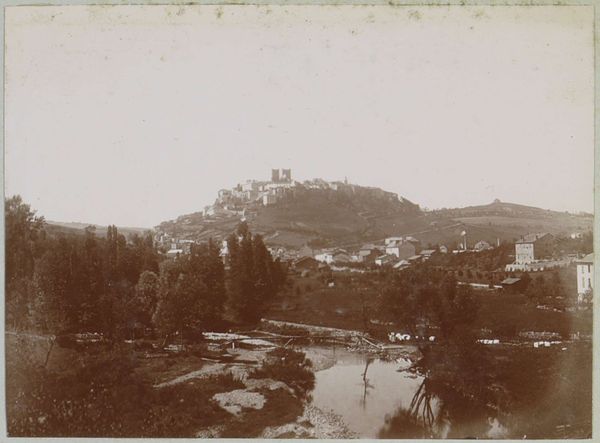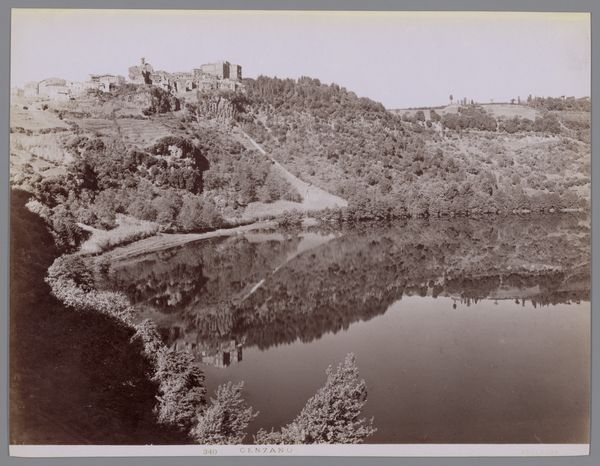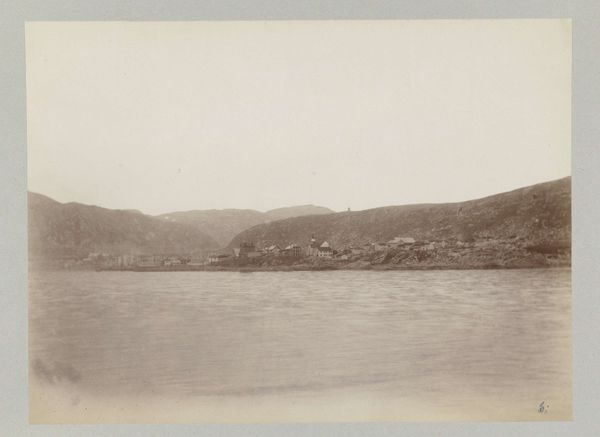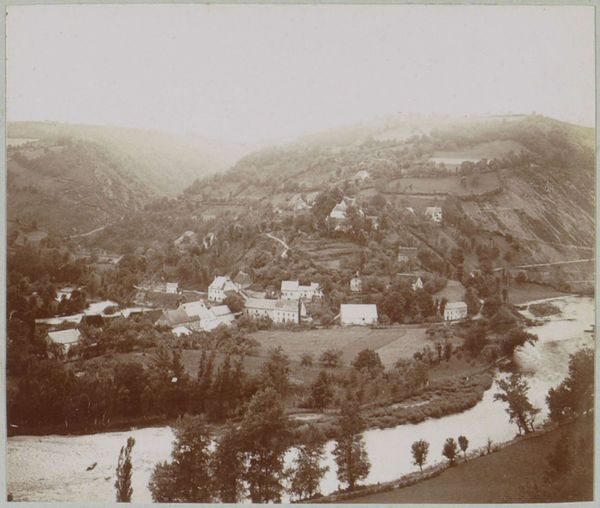
Dimensions: height 69 mm, width 77 mm
Copyright: Rijks Museum: Open Domain
Editor: This is “Gezicht op Uzerche aan de Vézère,” taken in 1903. It’s a photograph, and it depicts a cityscape along a river. The sepia tone gives it a feeling of looking into the past, and I'm drawn to the contrast between the grand buildings on the hill and the more humble structures by the water. What draws your eye when you look at this image? Curator: I'm immediately struck by the process itself. This is a photograph from 1903. How did Delizy access these new materials? Who printed it? Are the chemical processes visible? It raises questions about accessibility to photographic technology at the time. Photography was still relatively novel. How did it shift how landscapes and labor were being depicted? Editor: That's a really interesting point! I hadn’t considered the production and the access. The act of capturing a scene like this with the tools available then, it must have been quite something. Do you think that impacted the aesthetic choices of photographers like Delizy? Curator: Absolutely. The material conditions shaped the final product. We have a unique tone given that this piece is on photographic paper. Look closely; you can see imperfections and textures that wouldn’t be present in a contemporary digital print. I believe this is central to the work's character and value. Do you notice anything else that alludes to labour? Editor: The positioning of the working buildings so close to the river, at the foot of the upper city, hints at some sort of access for labour or trade to move in and out. Seeing how art is shaped by practical processes and material realities gives me a much more solid appreciation for the artist's skill! Curator: Indeed. Focusing on materials and social context shows us how art reflects, and is even shaped by real-world conditions. I never thought about it so literally before.
Comments
No comments
Be the first to comment and join the conversation on the ultimate creative platform.
